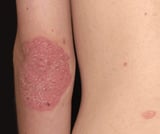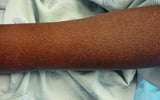Which Of The Following Syringe Sizes Would Be Used To Administer Medication?
Drugs are introduced into the torso by several routes. They may be
-
Taken past mouth (orally)
-
Given by injection into a vein (intravenously, Iv), into a muscle (intramuscularly, IM), into the infinite effectually the spinal cord (intrathecally), or below the skin (subcutaneously, sc)
-
Placed under the natural language (sublingually) or between the gums and cheek (buccally)
-
Inserted in the rectum (rectally) or vagina (vaginally)
-
Placed in the eye (past the ocular road) or the ear (by the otic route)
-
Sprayed into the nose and captivated through the nasal membranes (nasally)
-
Breathed into the lungs, ordinarily through the mouth (past inhalation) or mouth and nose (by nebulization)
-
Applied to the pare (cutaneously) for a local (topical) or bodywide (systemic) effect
-
Delivered through the skin by a patch (transdermally) for a systemic effect
Each route has specific purposes, advantages, and disadvantages.
Many drugs can be administered orally equally liquids, capsules, tablets, or chewable tablets. Considering the oral route is the most convenient and unremarkably the safest and least expensive, information technology is the ane most oftentimes used. However, it has limitations because of the manner a drug typically moves through the digestive tract. For drugs administered orally, absorption may begin in the mouth and stomach. However, most drugs are unremarkably absorbed from the minor intestine. The drug passes through the intestinal wall and travels to the liver before beingness transported via the bloodstream to its target site. The intestinal wall and liver chemically alter (metabolize) many drugs, decreasing the corporeality of drug reaching the bloodstream. Consequently, these drugs are often given in smaller doses when injected intravenously to produce the same upshot.
When a drug is taken orally, nutrient and other drugs in the digestive tract may bear upon how much of and how fast the drug is absorbed. Thus, some drugs should be taken on an empty breadbasket, others should be taken with nutrient, others should not be taken with certain other drugs, and still others cannot be taken orally at all.
Other routes of assistants are required when the oral route cannot be used, for example:
-
When a person cannot take annihilation by oral fissure
-
When a drug must be administered chop-chop or in a precise or very loftier dose
-
When a drug is poorly or erratically absorbed from the digestive tract
Assistants by injection (parenteral assistants) includes the post-obit routes:
-
Subcutaneous (under the pare)
-
Intramuscular (in a muscle)
-
Intravenous (in a vein)
-
Intrathecal (around the spinal cord)
A drug product can be prepared or manufactured in means that prolong drug absorption from the injection site for hours, days, or longer. Such products practise non need to be administered as often as drug products with more rapid absorption.
Through the Skin
Sometimes a drug is given through the skin—past needle (subcutaneous, intramuscular, or intravenous route), by patch (transdermal route), or by implantation.
For the subcutaneous route, a needle is inserted into fatty tissue just beneath the skin. After a drug is injected, it and so moves into pocket-size blood vessels (capillaries) and is carried away past the bloodstream. Alternatively, a drug reaches the bloodstream through the lymphatic vessels (encounter figure Lymphatic System: Helping Defend Against Infection Lymphatic System: Helping Defend Against Infection  ). Protein drugs that are large in size, such as insulin, usually achieve the bloodstream through the lymphatic vessels because these drugs move slowly from the tissues into capillaries. The subcutaneous route is used for many poly peptide drugs because such drugs would be destroyed in the digestive tract if they were taken orally.
). Protein drugs that are large in size, such as insulin, usually achieve the bloodstream through the lymphatic vessels because these drugs move slowly from the tissues into capillaries. The subcutaneous route is used for many poly peptide drugs because such drugs would be destroyed in the digestive tract if they were taken orally.
The intramuscular road is preferred to the subcutaneous route when larger volumes of a drug product are needed. Because the muscles lie beneath the peel and fat tissues, a longer needle is used. Drugs are normally injected into the musculus of the upper arm, thigh, or buttock. How apace the drug is absorbed into the bloodstream depends, in role, on the claret supply to the muscle: The sparser the blood supply, the longer it takes for the drug to exist absorbed.
For the intravenous route, a needle is inserted direct into a vein. A solution containing the drug may be given in a single dose or past continuous infusion. For infusion, the solution is moved by gravity (from a collapsible plastic purse) or, more commonly, by an infusion pump through thin flexible tubing to a tube (catheter) inserted in a vein, ordinarily in the forearm. Intravenous assistants is the best way to deliver a precise dose chop-chop and in a well-controlled manner throughout the body. Information technology is as well used for irritating solutions, which would cause pain and damage tissues if given past subcutaneous or intramuscular injection. An intravenous injection can be more than difficult to administer than a subcutaneous or intramuscular injection because inserting a needle or catheter into a vein may be hard, especially if the person is obese.
When given intravenously, a drug is delivered immediately to the bloodstream and tends to take effect more quickly than when given by whatever other route. Consequently, health intendance practitioners closely monitor people who receive an intravenous injection for signs that the drug is working or is causing undesired side effects. Likewise, the issue of a drug given by this road tends to last for a shorter time. Therefore, some drugs must exist given by continuous infusion to go on their event constant.
For the intrathecal route, a needle is inserted between two vertebrae in the lower spine and into the space around the spinal cord. The drug is then injected into the spinal canal. A minor amount of local anesthetic is often used to numb the injection site. This route is used when a drug is needed to produce rapid or local effects on the brain, spinal string, or the layers of tissue covering them (meninges)—for example, to treat infections of these structures. Anesthetics and analgesics (such as morphine) are sometimes given this way.
A few drugs are placed nether the natural language (taken sublingually) or between the gums and teeth (buccally) so that they can dissolve and be captivated directly into the minor blood vessels that lie below the tongue. These drugs are non swallowed. The sublingual route is particularly good for nitroglycerin, which is used to relieve angina, because absorption is rapid and the drug immediately enters the bloodstream without get-go passing through the intestinal wall and liver. Yet, most drugs cannot be taken this way because they may be absorbed incompletely or erratically.
Many drugs that are administered orally can also be administered rectally as a suppository. In this class, a drug is mixed with a waxy substance that dissolves or liquefies later it is inserted into the rectum. Because the rectum'due south wall is thin and its blood supply rich, the drug is readily absorbed. A suppository is prescribed for people who cannot have a drug orally because they have nausea, cannot swallow, or have restrictions on eating, as is required before and after many surgical operations. Drugs that tin be administered rectally include acetaminophen (for fever), diazepam (for seizures), and laxatives (for constipation). Drugs that are irritating in suppository grade may take to be given by injection.
Some drugs may be administered vaginally to women as a solution, tablet, cream, gel, suppository, or ring. The drug is slowly absorbed through the vaginal wall. This route is often used to give estrogen to women during menopause to relieve vaginal symptoms such as dryness, soreness, and redness.
Drugs used to treat eye disorders (such as glaucoma, conjunctivitis, and injuries) can be mixed with inactive substances to make a liquid, gel, or ointment so that they tin can be practical to the eye. Liquid middle drops are relatively easy to apply only may run off the heart too quickly to be absorbed well. Gel and ointment formulations go on the drug in contact with the eye surface longer, simply they may mistiness vision. Solid inserts, which release the drug continuously and slowly, are likewise bachelor, simply they may be hard to put in and keep in place.
Ocular drugs are almost always used for their local effects. For example, artificial tears are used to salve dry optics. Other drugs (for example, those used to treat glaucoma [see table Drugs Used to Care for Glaucoma ], such equally acetazolamide and betaxolol, and those used to dilate pupils, such as phenylephrine and tropicamide) produce a local effect (acting directly on the eyes) later they are absorbed through the cornea and conjunctiva. Some of these drugs then enter the bloodstream and may cause unwanted side effects on other parts of the torso.
Drugs used to treat ear inflammation and infection can be practical straight to the affected ears. Ear drops containing solutions or suspensions are typically applied only to the outer ear canal. Before applying ear drops, people should thoroughly clean the ear with a moist cloth and dry information technology. Unless the drugs are used for a long time or used besides much, trivial of the drugs enter the bloodstream, so bodywide side furnishings are absent or minimal. Drugs that can exist given by the otic road include hydrocortisone (to relieve inflammation), ciprofloxacin (to treat infection), and benzocaine (to numb the ear).
If a drug is to exist breathed in and absorbed through the thin mucous membrane that lines the nasal passages, it must be transformed into tiny droplets in air (atomized). Once absorbed, the drug enters the bloodstream. Drugs administered past this road generally piece of work apace. Some of them irritate the nasal passages. Drugs that can exist administered by the nasal route include nicotine (for smoking cessation), calcitonin (for osteoporosis), sumatriptan (for migraine headaches), and corticosteroids (for allergies).
Drugs administered by inhalation through the mouth must exist atomized into smaller droplets than those administered by the nasal route, so that the drugs can pass through the windpipe (trachea) and into the lungs. How deeply into the lungs they go depends on the size of the droplets. Smaller droplets go deeper, which increases the amount of drug absorbed. Inside the lungs, they are absorbed into the bloodstream.
Relatively few drugs are administered this style because inhalation must be carefully monitored to ensure that a person receives the right corporeality of drug within a specified time. In addition, specialized equipment may be needed to give the drug by this route. Usually, this method is used to administrate drugs that act specifically on the lungs, such as aerosolized antiasthmatic drugs in metered-dose containers (called inhalers), and to administer gases used for general anesthesia.
Side effects can include those that occur when the drug is deposited directly in the lungs (such every bit cough, wheezing, shortness of jiff, and lung irritation), spread of the drug into the environment (possibly affecting people other than the one taking the drug), and contamination of the device used for nebulization (particularly when the device is reused and inadequately cleaned). Using the device properly helps prevent side effects.
Drugs applied to the peel are usually used for their local effects and thus are most commonly used to treat superficial skin disorders, such equally psoriasis Psoriasis Psoriasis is a chronic, recurring disease that causes 1 or more raised, red patches that have silvery scales and a distinct border betwixt the patch and normal peel. A problem with the immune... read more  , eczema Atopic Dermatitis (Eczema) Atopic dermatitis (normally referred to as eczema) is chronic, itchy inflammation of the upper layers of the peel that frequently develops in people who accept hay fever or asthma and in people who... read more than
, eczema Atopic Dermatitis (Eczema) Atopic dermatitis (normally referred to as eczema) is chronic, itchy inflammation of the upper layers of the peel that frequently develops in people who accept hay fever or asthma and in people who... read more than  , skin infections (viral Viral Pare Infections , bacterial Overview of Bacterial Peel Infections The peel provides a remarkably good barrier against bacterial infections. Although many bacteria come up in contact with or reside on the skin, they are ordinarily unable to establish an infection... read more than , and fungal Overview of Fungal Skin Infections Fungi usually make their homes in moist areas of the body where peel surfaces see: betwixt the toes, in the genital area, and nether the breasts. Mutual fungal skin infections are acquired past... read more ), itching Itching Itching tin be very uncomfortable. It is one of the most common reasons people see doctors who specialize in skin disorders (dermatologists). Itching makes people want to scratch. Scratching... read more , and dry skin Dry Skin (Xeroderma) Xeroderma is ordinary dry skin. (See also Itching.) Normal skin owes its soft, pliable texture to its water content. To assist protect against water loss, the outer layer of skin contains oil... read more
, skin infections (viral Viral Pare Infections , bacterial Overview of Bacterial Peel Infections The peel provides a remarkably good barrier against bacterial infections. Although many bacteria come up in contact with or reside on the skin, they are ordinarily unable to establish an infection... read more than , and fungal Overview of Fungal Skin Infections Fungi usually make their homes in moist areas of the body where peel surfaces see: betwixt the toes, in the genital area, and nether the breasts. Mutual fungal skin infections are acquired past... read more ), itching Itching Itching tin be very uncomfortable. It is one of the most common reasons people see doctors who specialize in skin disorders (dermatologists). Itching makes people want to scratch. Scratching... read more , and dry skin Dry Skin (Xeroderma) Xeroderma is ordinary dry skin. (See also Itching.) Normal skin owes its soft, pliable texture to its water content. To assist protect against water loss, the outer layer of skin contains oil... read more  . The drug is mixed with inactive substances. Depending on the consistency of the inactive substances, the formulation may be an ointment, foam, lotion, solution, pulverisation, or gel (meet Topical Preparations Topical Preparations Topical drugs (drugs applied directly to the skin) are a mainstay of treating skin disorders. Systemic drugs are taken by rima oris or given by injection and are distributed throughout the body... read more ).
. The drug is mixed with inactive substances. Depending on the consistency of the inactive substances, the formulation may be an ointment, foam, lotion, solution, pulverisation, or gel (meet Topical Preparations Topical Preparations Topical drugs (drugs applied directly to the skin) are a mainstay of treating skin disorders. Systemic drugs are taken by rima oris or given by injection and are distributed throughout the body... read more ).
Some drugs are delivered bodywide through a patch on the skin. These drugs are sometimes mixed with a chemical (such as booze) that enhances penetration through the skin into the bloodstream without whatever injection. Through a patch, the drug can be delivered slowly and continuously for many hours or days or even longer. As a result, levels of a drug in the blood can be kept relatively abiding. Patches are particularly useful for drugs that are speedily eliminated from the trunk considering such drugs, if taken in other forms, would have to be taken oftentimes. However, patches may irritate the skin of some people. In addition, patches are express by how quickly the drug tin can penetrate the skin. Only drugs to be given in relatively small-scale daily doses tin can exist given through patches. Examples of such drugs include nitroglycerin (for chest pain), scopolamine (for motility sickness), nicotine (for smoking abeyance), clonidine (for high blood pressure), and fentanyl (for pain relief).
Which Of The Following Syringe Sizes Would Be Used To Administer Medication?,
Source: https://www.msdmanuals.com/home/drugs/administration-and-kinetics-of-drugs/drug-administration
Posted by: meyerscamonwarld.blogspot.com


0 Response to "Which Of The Following Syringe Sizes Would Be Used To Administer Medication?"
Post a Comment